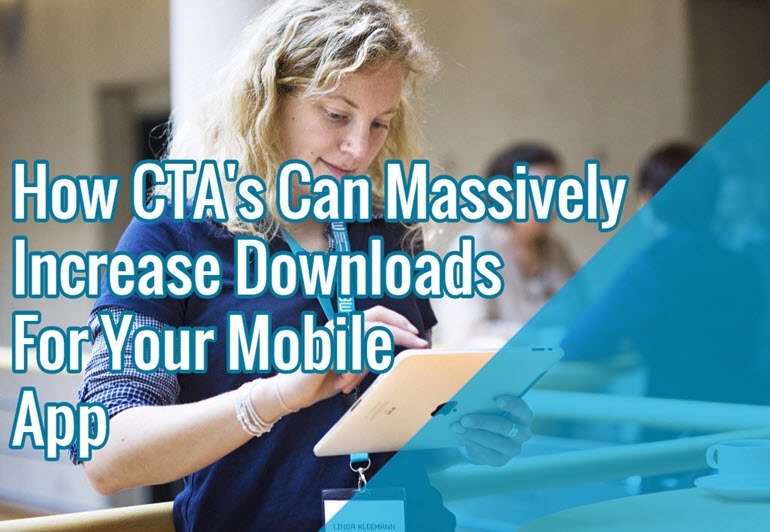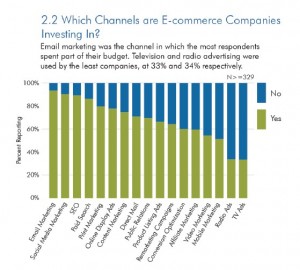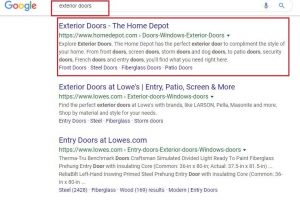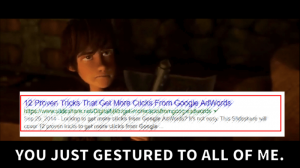App store optimization (ASO) is almost completely different from web SEO, and it means taking care of several details that will get your app visible among all those competitors. By the last average count, Google Play offers users 1.5 million apps to choose from, with Apple’s iTunes roughly 1.4 million. It’s true that you won’t be competing with all of them, but even so, there are dozens or more competitors within any given niche, and the app store displays as many as possible next to you. Unless you’re able to come up with a totally unique app (which by this point must be close to impossible), then competition really is something you need to worry about, or at least seriously consider.
And seeing how more and more people are using smartphones for various activities, from entertainment to shopping, and the direction mobile usage is taking towards app usage over browser search, you’ll be wanting to create an app that complements your online presence.

One of the most important aspects of ASO that you need to pay attention to, and which can increase the number of downloads for your app, is a well-crafted call to action. You may be familiar with CTAs from copywriting, but today we’re going to go through how good calls to action are written, and how they should be adapted for your app description in order to convince visitors to download and install your app. There are different considerations to creating a good CTA for app stores and in what follows, we’re going to review what those are, looking at some tips that help you craft persuasive copy.
If you’ve created app versions for both Android and iOS, then you need to do ASO for both Google Play and for iTunes, and tend to them separately. A well written CTA will make the difference between you and the competition and convince visitors that your offer is the best one.
Now Read:
- Everything You Need To Know About Marketing Mobile Apps
- App Store Optimization: ASO For Your Google Play Store
- Everything You Need to Know about Creating an App for Your Business
Next Steps:
- Everything You Need To Know About Marketing Mobile Apps
- App Store Optimization: ASO For Your Google Play Store
- Everything You Need to Know about Creating an App for Your Business
Hand-Picked Related Articles:
- Everything You Need To Know About Marketing Mobile Apps
- App Store Optimization: ASO For Your Google Play Store
- Everything You Need to Know about Creating an App for Your Business
What makes a good CTA
Before we get into how a good CTA should be written, we need to take a quick look at how app descriptions factor into marketing your app in the app store and how they might influence downloads.
On both app stores, the description limit is 4,000 characters, but there’s a catch. Apple’s app store only shows a maximum of roughly 340 characters above the fold (before users have to click “more” to further read about your app), whereas Google’s app store is a lot more permissive, showing about 1,250 characters above the fold.
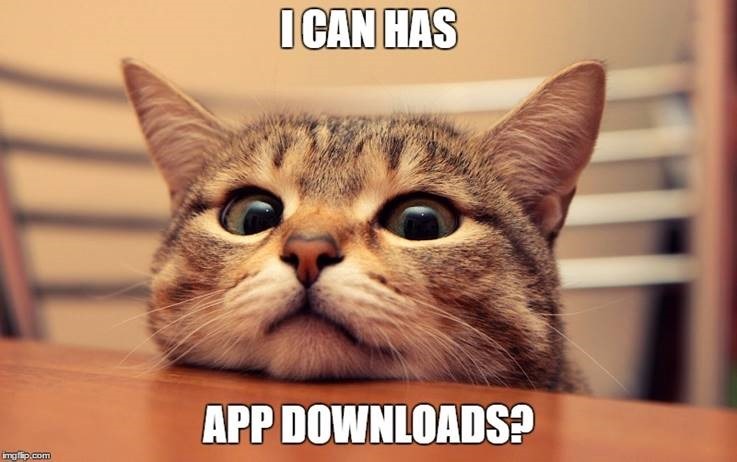
These numbers are the variable limits within which you need to be as convincing and attractive as possible, and entice readers to take action now, or have them read more about your app. Overall, 4,000 characters for the app description are more than enough space for you to say everything you need to about your app. Readers won’t have the patience for more anyway.
Publishing your mobile app in app stores will take some getting used to, because you need to consider the space at your disposal, how to format text in order to attract attention and highlight important features, and choosing the best screenshots and references for the app. But creating attractive copy is not that difficult once you get the hang of it, and when you’re confident in expressing the qualities of your product.
You should look at your app description as advertising copy. This means you have to be clear, concise, descriptive, and have a clear value proposition. Because you’re dealing with both above the fold and below the fold text, your copy should include at least two CTAs. One of them should be present in the first few lines of the description, and include a benefit that will make users see the value in your app. Below the fold, add an even more actionable CTA that encourages users to do something immediately and reminds them to download your app.
Here are some of the characteristics of a good CTA:
- it uses clear, actionable language (“download, explore, find out, discover”)
- it has a clear value proposition, allowing the reader to conceive the benefit of doing what you encourage
- it uses uniform and evident language, avoiding any ambiguity or inside jokes
- it makes the benefit(s) obvious, enticing users to act immediately
- it highlights time sensitivity (where the case applies) – tell the reader how your app (or idea, product, organization, service in other cases) will solve a problem they have right now
- it makes readers excited about what you’re telling them and plays on their emotions.
Writing a good CTA takes some practice and persistence, and you have to be careful about the language you use. Try to write as many versions as you can; like with any brainstorming session, don’t exclude the bad ideas – sometimes, two bad ideas can result in a good one that gets you the best CTA formula you could ever find.
Crafting your CTA will be difficult, but if you’re not able to quickly summarize what the product is about and what value it offers, then you may need to rethink your strategy, or perhaps even your app.
Test Your CTA’s In-house
Before you launch your CTAs, test them with peers, colleagues, and even friends who are not in the industry. Choose the best few versions you have, and ask people you know to tell you their opinions; you can make a poll of sorts, and see which versions come up the most.
Control the polling results by showing people the same variants, in the same number. Tell them to choose what they think is most convincing for them personally, and give feedback on anything they think should be changed.
The power of an elevator pitch
One way you could think about CTAs and app descriptions for the app store is like an elevator pitch. Elevator pitches, commonly used in sales and marketing, are short speeches that you prepare beforehand, so you can deliver them in unforeseen situations when you encounter a prospective client or need to convince someone within your organization of the validity or benefits of an idea.
An elevator pitch should not be longer than 30 seconds. It should have a clear goal, and explain what you do (or want to do). It should present a clear benefit and value of what you propose, and have a unique selling proposition so you attract interest and excitement. Because elevator pitches are exactly as the name suggests (spoken propositions), they usually have to involve exciting language and be presented in a manner that appeals to the person you’re speaking to.

They should also be engaging, which is why they usually end with a question that requires feedback from the other person and gets them thinking about your proposition.
To adapt this to your app description, the open-ended question becomes the CTA that captivates your audience and makes them consider downloading your app.
A/B Testing Your CTA’s
You’re going to want to test your CTAs online as well, until you reach the most convincing and attractive version.
To begin with, you need to consider A/B testing your call to action. This is even easier to accomplish if your app works on both Android and iOS and you prepare to advertise it on Google Play and iTunes. That means you can choose the best two calls to action (or four, if your copy will contain more than one CTA), and place them in separate app stores.
Using tracking tools like AppAnnie, you can track the number of downloads your app gets on each store. If you notice big differences between stores, it could mean that one of the CTAs is more convincing than the other. To keep your test controlled, use the same copy overall, with the same screenshots, and so on.
You can also change your CTA as your app becomes more popular, and continue tweaking and optimizing your copy. For instance if your app gains notoriety and becomes a household name, you could use trademark phrases found within the app, which people recognize instantly from pop culture and word of mouth.
Elements That Boost Your CTA’s
Because your entire copy has to be filled with descriptive and actionable language that convinces readers to install your app, you have several opportunities to introduce calls to action.
In some situations, depending on the nature of the apps, the problem they solve or the benefits they bring are clear-cut (such as an app that tracks your jogging routine, or that helps you organize meetings). With others however, you have to make the benefit obvious, as people might not even know they needed the solution you propose.
The following elements should be present in your app descriptions anyway, but we are going to focus on how you can include calls to action in them. Others are part of your marketing plan for the app, and they’re found someplace other than the app store.

1. Videos
If you want your description to be even more compelling, you have to add a video of your app. The video can either be a demo or guide that shows how the app works and what it does, or it can be more like an advertisement, showing uses in real life, in real situations that the viewer can empathize with. The script for your video (whether it’s written across the screen, or spoken), should also include highly emotional and actionable language that convinces users they need your app.
Very importantly, you should hire a professional company to create the promotional videos for your app and help with your branding efforts. Remember you’re competing with plenty others, and you need to present your product in the best possible manner. Google’s promotion of their Google Maps app is a very good example: they’ve added both a video (which shows how the app works) and screenshots; on YouTube, they’ve also added a video that shows how the app works in real life, and it’s first-person perspective makes viewers quickly identify with using it.
<iframe width=”560″ height=”315″ src=”https://www.youtube.com/embed/oVg7hx3srzo” frameborder=”0″ allowfullscreen></iframe>
Consequently, you can add a well-targeted CTA in the text below the video, to reinforce the idea of downloading with your viewers.
2. Screenshots
Screenshots of the app are a must on both Google Play and iTunes. Start with the best two screenshots of the app, which describe its use and show the lovely graphics and value of the product. Even if your app is horizontal, make the first two screenshots vertical to gain more space on the page.
To further inspire visitors to take action, add some banners in the corners of the screenshots. CTAs here should be more about showing a benefit the user would incur by using the app, rather than a prompt to download it.
3. Testimonials
Testimonials are endorsements made by those who have used your app. When it comes to reviews of a product or service, people are more easily convinced by user testimonials, and perceive them to be more trustworthy, rather than reviews made by industry magazines, bloggers, or other devs like you. Google Play offers prime real estate for user reviews, and even allows developers to answer any questions or issues that arise.
That means that even for less than flattering reviews, you have the opportunity to show the awesome support your team offers for the app, and prove that user experience and satisfaction are a priority for you.
As for testimonials from official sources, aim for diversity, so you can put forth as many different qualities of the app as you can. Right below these, add a compelling CTA that prompts visitors to install your app on their phones.

4. App Website
One of the best things you could do to promote your app is to create an app website. Even when you’re confident in the quality of your product, creating a website to reinforce it has a lot of benefits. First of all, you can start promoting it and creating a customer base even before the app is ready. You can begin by telling the story of your app and even add a blog for SEO support that increases the visibility of your product.
On a website, you can add a lot more details about your app, like advertising videos, demos, guides and other clips created by users (if available), reviews written by niche bloggers, user testimonials, and screenshots of the app as you develop it and get near completion. You can also create a list of email subscribers, as you’ll see below.
The copy and content on your website will also contain calls to action that highlight the value of your upcoming app and create excitement around its uses, or the problems it solves.
5. Email Subscriptions
On your app’s website you can create a list of email subscribers which you can keep updated about the status of your app and its development. Your email copy can also contain CTAs that encourage users to go back to the app and see any updates you’ve introduced.
Avoid making your emails spammy, and don’t send them too often; only do this when you have real information to share with your readers, such as wanting to tell an interesting story about development, about raising more funds for your product, about nearing completion, or about adding new features to the app – keeping them engaged even after the app was launched is just as important.
6. App indexing
For now, app indexing is only available for Android apps in Google search. Soon, Google will implement app indexing for iOS apps as well. This wonderful feature allows apps to appear as organic listings in SERPs when they are relevant to a user’s query. To learn more about implementing app indexing, check out my complete mobile SEO guide, which also gives advice on other ASO essentials.
Thanks to deep linking capabilities, you can link to specific content within your app, so when related to a query, it will show up in mobile SERPs, next to an install button. This means users can install your app directly from the link list, and then get redirected precisely to the content they were interested in within the app.
If the user already has your app installed, then Google’s algorithm may choose to show it even more prominently in listings, thus re-engaging users with your app.
Are You Ready Now? App-solutely!
As you can see, CTAs have a great impact over the number of app downloads. Telling visitors exactly what you want from them, or directly what they have to gain from your app, can make the difference between increasing download numbers and being ignored. Remember to make your calls to action compelling, inviting, actionable and showing added value.
The better you craft your CTAs, the greater your chances will be to increase downloads and ensure the success of your app.
Do you have any particular methods for creating compelling calls to action, or good examples of persuasive CTAs you, or others have implemented? Let me know in the comments!
* Lead image adapted from DieZBW
How CTA’s Can Massively Increase Downloads For Your Mobile App
The post How CTA’s Can Massively Increase Downloads For Your Mobile App appeared first on Search Engine People Blog.
(130)

